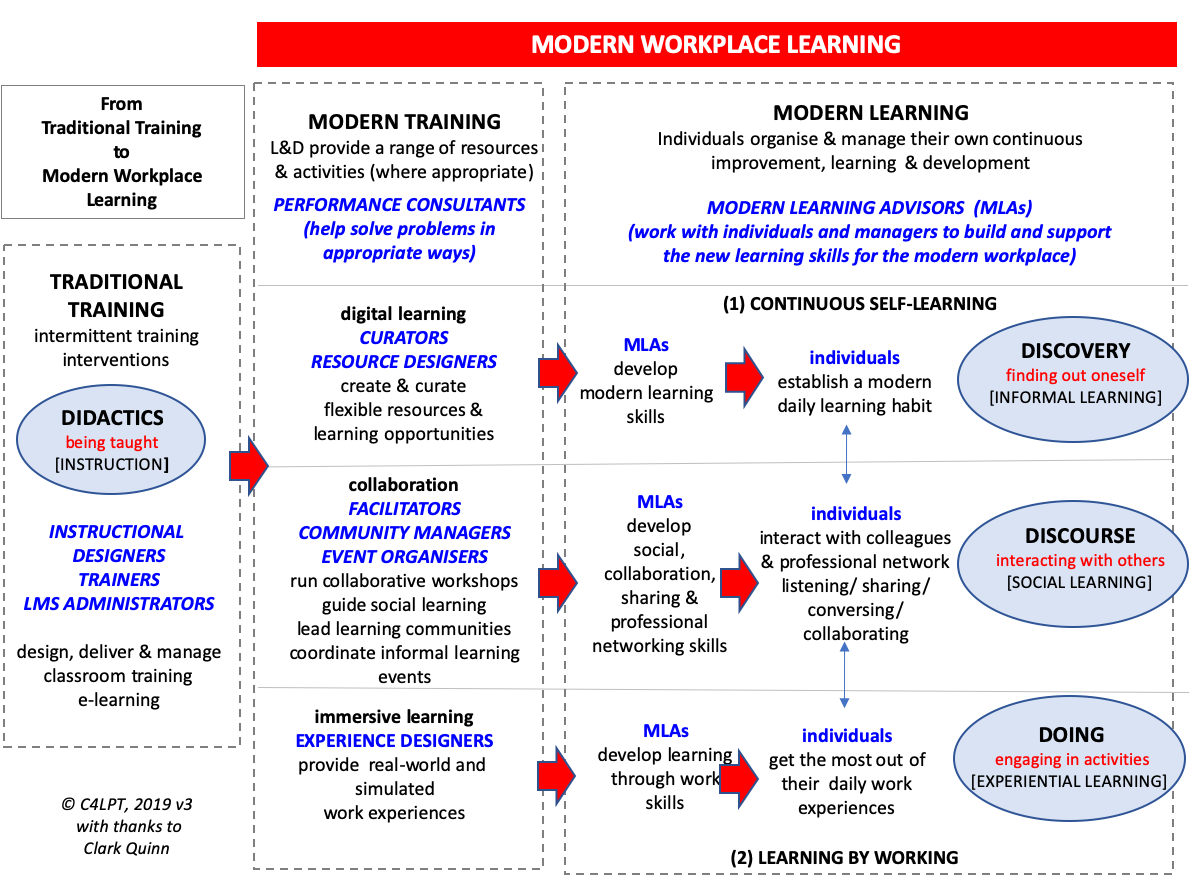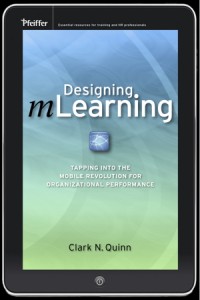Jane Hart has just come up with something new and, to me, intriguing. Ok, so she’s a colleague from the Internet Time Alliance, and I’ve been a fan of her work for a while, but I think this is particularly good. If you’ve read here before, you’ll know I love a good model (Harold Jarche’s Seek>Sense>Share comes to mind). So when I parsed her “from training to modern workplace learning”, it resonated in many ways. So here’s her framework with some comments.
First, some context. If you’ve known my work at all, you know that I’ve been pushing a L&D revolution. And that’s about rethinking training to be about transformative experience design, performance support to be included, and informal learning to be also addressed. That’s intellectricity! And it’s sometimes hard to tie them together coherently.
Jane’s always had a talent for drilling down into the practicalities in sensible ways. Her books, continually updated, have great specifics about things to do. This is a framework that ties it together nicely.
 The thing I like is the way she’s characterized different activities. The categories of Discovery (informal learning), Discourse (social learning), and Doing (experiential learning) provides a nice handle around which to talk about elements, roles, and tasks. And, importantly, prescriptions. And I really like the ‘meta’ layer, where she suggests skills for each vertical.
The thing I like is the way she’s characterized different activities. The categories of Discovery (informal learning), Discourse (social learning), and Doing (experiential learning) provides a nice handle around which to talk about elements, roles, and tasks. And, importantly, prescriptions. And I really like the ‘meta’ layer, where she suggests skills for each vertical.
I’m not without quibbles, however small. For instance, with her use of microlearning, because of my concerns about the label rather than her specific intention. She told me personally that she means “short daily learning”, and I think that’s great. I just think of that as spaced learning ;). And I might label ‘discovery’ to be ‘develop’, because it’s about the individual’s continual learning. And I’m not sure there’s what I call ‘slow’ innovation there, creating a culture and practices about experimentation and exposure to the ‘adjacent possible’. But it’s hard for one diagram to capture everything, and this does a great job.
I admit that I haven’t parsed all the nuances yet. But as an advocate of diagrams and frameworks, I think this is truly insightful and useful. (And she’s updated it so I’ve grabbed this copy which appears to have lost microlearning.) I’m sure she, as well as I, welcome your thoughts!






